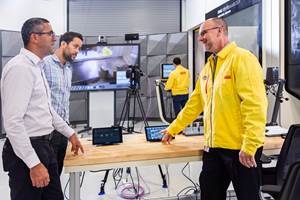Creating Constructive Change: Training
The Mold Shop Puzzle
Training is the most discussed area in a shop with the least amount of action.
“An investment in knowledge pays the best interest.”—
Benjamin Franklin
Each recession and downturn throughout the past 50 years has slowly had a negative impact on this industry. Companies with very strong apprenticeship programs had to cut expenses to improve their monthly bottom lines, and they did this by cutting back on training. Training became an easy target for cost-cutting since an apprenticeship program was not directly billable to customers. So the programs were cut completely. Currently, only a few companies offer any type of formal apprenticeship programs and the pool of potential employees continues to get smaller each year.
Today there exists in America a virus—a knowledge gap in how we train our apprentices and continually train our existing journeyman. The problem is threefold:
- More people are retiring from the industry than new people entering it;
- No formal process to train new employees exits; and,
- A technology boom that is revolutionizing how we build molds with no method to incorporate these new technologies into our current processes.
The old school method of passing the tricks of the trade and bringing people into our industry is slowly falling by the side of the road as workers in our industry retire and no replacements are in sight. In the next 10 years 80 percent of the workforce, considered moldmakers, will reach an age of retirement—with their long-accepted training methods not being passed down. Another challenge is that many of the old processes are no longer relevant because of new technologies. This is a problem in a downward spiral out of control.
In addition, the boom in technology has created a very interesting paradigm. Machines, design software and communications have all advanced faster than anyone could imagine with shops investing heavily in these new technologies yielding great improvements in their operations. However, the true potential of improvement is rarely met, since many shops only use this new technology to a fraction of its capability. This is a problem left unaddressed because many shops do not view it as a problem; yet it is part of the puzzle that impacts a shop’s competitiveness.
Shops that have taken the initiative—through training—to use all of this new technology to its greatest potential have not been impacted by downturns. However, many shops only rely on basic training provided by whomever manufactured the technology they purchased or only train a minimal number of employees.
Plans to train more people are rarely implemented and those who were trained stay firmly in their entrenched ruts, which have given them proven results. Hence, a knowledge gap is created between the potential that can be achieved from new technology and what is actually being used.
Training is the most discussed area in a shop with the least amount of action. There is no industry standard for recruitment, training or continuous training. In order to sustain an industry, training and a plan for continuous training has to be a major priority. It will take a new way of thinking, through which shops take control and set the standards for the education level of each employee. A shop that willingly and generously invests in new technology should embrace training to get the most out of those investments.
The mindset of allowing someone else to recruit, train or solve your problems is an infection for which there is no magic pill. It must be addressed by each shop owner. Next month we showcase the before and after impact of a mold manufacturer that has embraced training.
Related Content
The Role of Social Media in Manufacturing
Charles Daniels CFO of Wepco Plastics shares insights on the role of social media in manufacturing, how to improve the “business” side of a small mold shop and continually developing culture.
Read MoreMMT Chats: The Connection Between Additive Manufacturing Education and ROI
This MMT Chat continues the conversation with Action Mold and Machining, as two members of the Additive Manufacturing team dig a little deeper into AM education, AM’s return on investment and the facility and equipment requirements to implement AM properly.
Read MoreHands-on Workshop Teaches Mold Maintenance Process
Intensive workshop teaches the process of mold maintenance to help put an end to the firefighting culture of many toolrooms.
Read MoreHow to Use Continuing Education to Remain Competitive in Moldmaking
Continued training helps moldmakers make tooling decisions and properly use the latest cutting tool to efficiently machine high-quality molds.
Read MoreRead Next
How to Use Continuing Education to Remain Competitive in Moldmaking
Continued training helps moldmakers make tooling decisions and properly use the latest cutting tool to efficiently machine high-quality molds.
Read MoreHow to Use Strategic Planning Tools, Data to Manage the Human Side of Business
Q&A with Marion Wells, MMT EAB member and founder of Human Asset Management.
Read MoreReasons to Use Fiber Lasers for Mold Cleaning
Fiber lasers offer a simplicity, speed, control and portability, minimizing mold cleaning risks.
Read More























